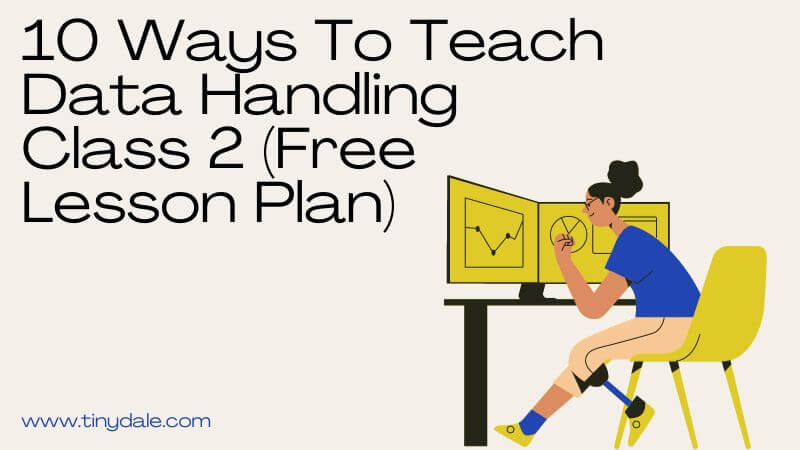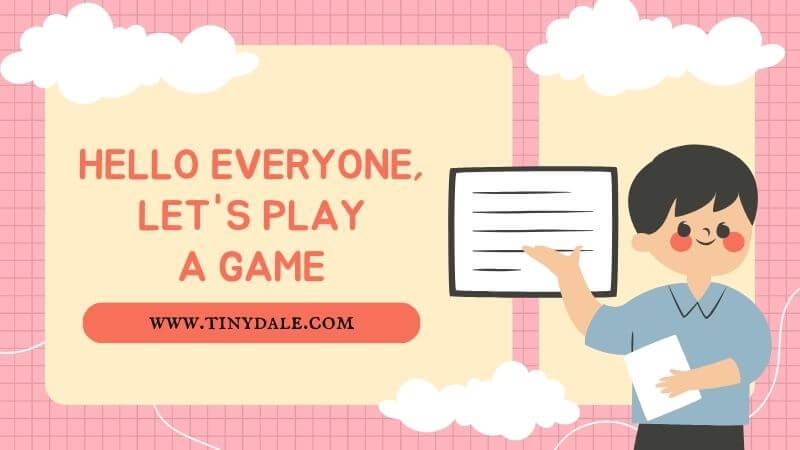The data handling class 2 lesson plan is in use to introduce your students.
Students will be able to gather, record, and understand information.
Students will learn how to create bar and pictorial graphs using data collected.
Kids are exposed to the notion of data processing in mathematics in Grade 2.
During Term 3, this lesson plan seeks to give an organized approach to teaching data management to Grade 2 pupils.
Introduction To Data Handling Class 2

You must have witnessed your instructor at your school take daily attendance of the kids in your class and enter it in the attendance book.
Or you must have seen your teacher publish your grades on report cards following each test.
Similarly to this, you must have encountered several kinds of tables in your daily life that contain names, numbers, statistics, etc.
These tables give you information.
Data is nothing more than a grouping of figures gathered to provide you with specific information.
Data handling is the process of gathering the collection of data, structuring it, and then presenting it in a new format.
The act of obtaining, preserving, and presenting data in a way that facilitates analysis, forecasting, and decision-making is data handling.
According to comparable standards, data has the same criteria.
The parameter is the context in which the comparisons between the items happen.
Pictographs, bar graphs, pie charts, histograms, line graphs, stem and leaf plots, and other visual representations of data are often sub-categories under data processing.
Each of them serves a distinct function.
Games For Data Handling Class 2
These data management games and activities help children learn how data is represented in a variety of ways, including pictograms, bar charts, pie charts, and tally charts.
They provide kids the chance to make their own bar and tally charts as well as chances for data analysis.
-
2D Shapes Carroll Diagrams
This tool will help you learn how to arrange 2D forms according to certain criteria on a Carroll diagram.
Two criteria are used to sort shapes.
Each of the four difficulty levels may assist kids in recognizing and learning the names of 2D forms.
This comes in a variety of hues, sizes, and orientations.
Levels 3 and 4 support the comprehension of the characteristics of right angles and regular and irregular 2D forms.
-
Carroll Diagrams Odd and Even
This tool helps you learn how to arrange numbers according to certain criteria on a Carroll diagram.
Two criteria sort the numbers.
In Level 1, numbers are classified as odd or even, greater than or less than a number up to 10, or greater than or less than a number up to 99.
In levels 3 and 4, numbers are sorted by odd or even, and by the place value of certain digits like 7 tens, up to 99 or 999, respectively.
-
Fishing
This dock is an excellent place to go fishing.
You’ll catch fish of every color. You can catch fish that accidentally hook themselves.
You’ll have to restart the level if a shark eats your hook.
You’ll need to respond to a question when you’ve caught enough fish to complete the level.
You will present a graph showing the number of fish of each color you caught.
Can you accurately read the question and answer?
The fish will swim faster as you move through the stages, so you’ll need to catch more of them to succeed.
After each level, the teacher provides students with basic graphic graphs.
Then, to accurately respond to the questions, pupils must practice their fundamental reading abilities.
-
Fruit Fall
Assist the farmer with the fruit harvest.
As the fruit falls, use your mouse or finger to drag the farmer to the left or right.
Catch as much fruit as you can, please!
After that, check the photograph to see how many fruit pieces you managed to catch.
Decide which number best represents how much fruit you managed to catch.
The number will be added to your score in the top left-hand corner if you are correct.
You’ll need to retry the level if not. With each level you advance, the fruit drops more quickly.
Students learn how a visual graph may represent data through this game.
This entertaining image graph game is a fantastic tool for quiet individual study, math centers, or indoor playtime.
Lesson Objectives Of Data Handling Class 2
After completing this lesson, students need to be able to:
- Recognize the idea of data and how it is represented.
- Utilise bar graphs and pictographs to gather, arrange, and depict data.
- Data given in pictograms and bar graphs should be interpreted and analyzed.
- Based on the facts, create inferences and forecasts.
Lesson Plan For Data Handling Class 2
-
Warm Up Activity
Engage students in a warm-up exercise at the start of the class to activate their past knowledge.
Ask them to identify several items in a photograph of a classroom by showing it to them.
Discuss the many items they named after writing down their answers on the board.
Explain that data is knowledge that is gained about numerous events or objects.
-
Introduction To Data Handling Class 2
You may introduce the concept of data management.
By acquiring and structuring the data to help in our comprehension and analysis of information, this is easy to do.
Give instances of other data categories, such as the number of pupils in each grade, favorite colors, or different kinds of animals.
Describe the ways in which bar graphs and pictographs are present to depict data.
-
Collecting Data
Divide the class into small groups and give each group a collection of toys to play with, such as colored blocks or toy animals.
Instruct the groups to gather information by counting and documenting the number of each object in their set.
Once the data has been gathered, have each group present their results to the class.
-
Organising And Representing Data
Explain the principle of grouping related things together to organize data.
Show how to make a pictograph using the obtained data.
Draw a pictograph on the board, labeling the items and representing the data with symbols.
Give each group a blank grid and ask them to draw their own pictogram using the data they obtained.
-
Interpreting And Analysing Data
Ask the class to explain the data in a pictograph or bar graph that has been projected on the board.
Talk about the title, labels, and size of the graph as well as its many components.
Ask questions to help students analyze the data, such as “Which object has the most/least?” and “How many more/less objects are there?”
-
Conclusion And Application
Recap the class by going over the important data-handling topics.
Give pupils a worksheet or task where they may use their data management expertise.
Encourage pupils to use the information provided to form conclusions and forecasts.
Summary!
This lesson plan offers a systematic method for introducing data management in mathematics to Grade 2 pupils.
Students will build a strong foundation in data handling skills by participating in practical activities and giving them chances for interpretation and analysis.
Tinydale is on YouTube, Click here to subscribe for the latest videos and updates.
Follow Us: Facebook | Instagram | Twitter | Youtube | Pinterest



